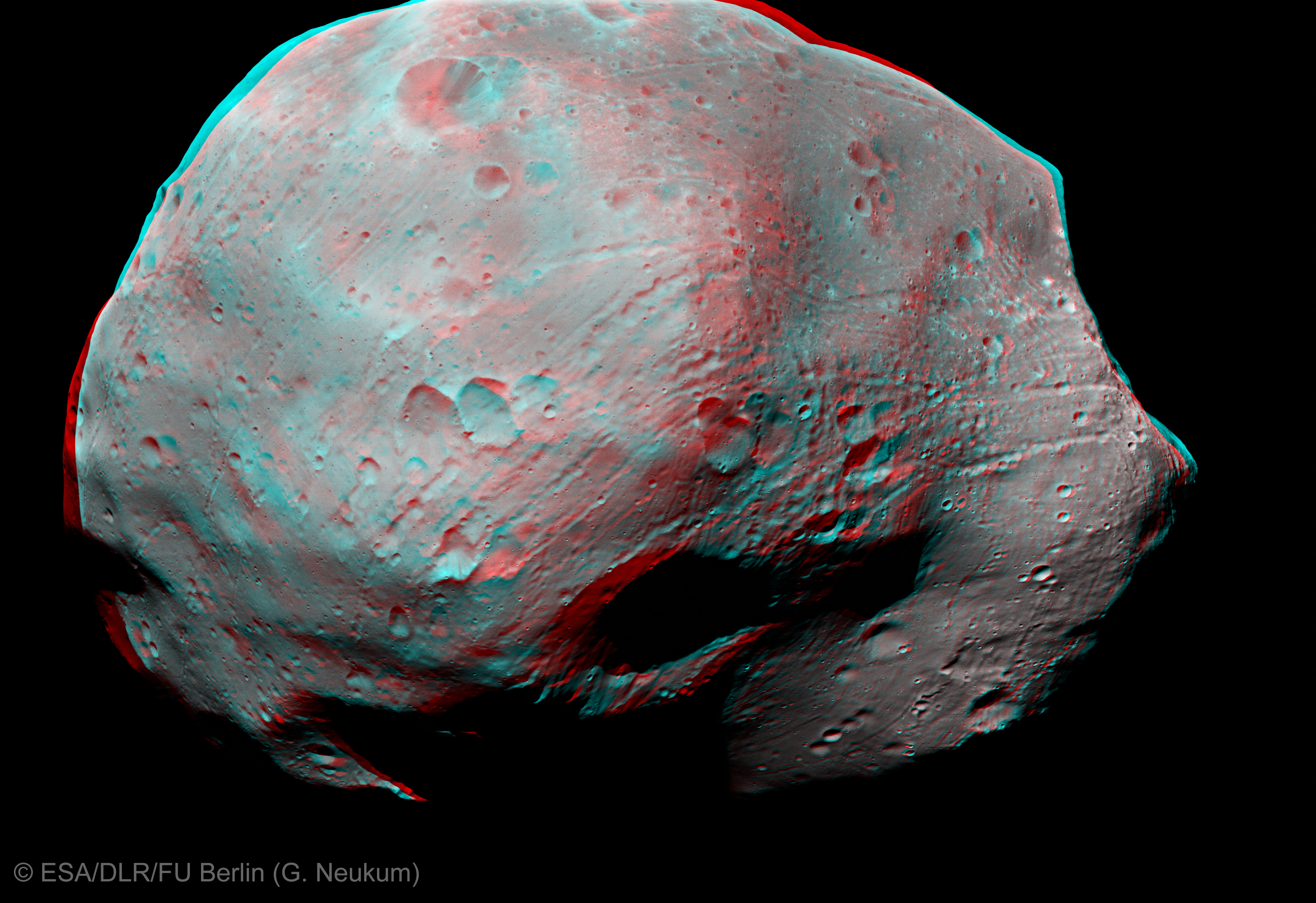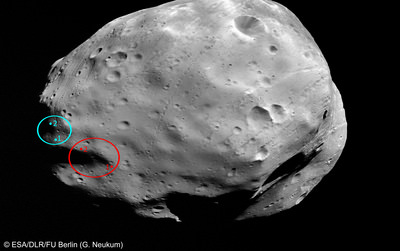[/caption]
The Mars Express team released the images today from the close flyby the spacecraft made of Phobos on January 9. The images weren’t downloaded from Mars Express until Jan. 18, and then they were processed, so these are hot off the press. The team didn’t provide much explanation, but enjoy the images. There’s one 3-D view in the group, so grab your 3-D glasses.



Here’s the on 3-D view, and the team explained that due to the stereo viewing geometry during the flyby a small part of the moon’s edge is only visible for the right eye resulting in odd 3D-perception in this area. This part has been slightly adjusted for better viewing. Also, for the left eye at the left edge of the image four small data gaps have been interpolated.

Source: ESA

I have always found Phobos to be intriguing, particularly in regard to the many crater chains which adorn its surface. On the “other” side of Phobos, around Stickney crater, they are so prolific, straight and even that they must raise eyebrows among planetary scientists. Even a good look from this angle shows many such long, straight chains. The hi-resolution images from ESA are fantastic for getting a close-up of these enigmatic features however explanations I’ve read about them leave much to be desired, IMNSHO.
Why did it take so long to release the photos? NASA photos are supposed to be in the public domain because NASA is taxpayer funded.
Maybe because it’s the European Space Agency?
The ME team said well ahead of time “to expect no pictures from the flyby until January 21, because the whole Phobos data set won’t be downloaded to Earth until January 18. The HRSC team will then process the data, and we can expect a release of images (including a 3D view) on Friday, 21 January.” (from our previous article http://www.universetoday.com/82302/mars-express-set-for-phobos-flyby/ )
I would have thought that a discussion of the surface features of Phobos would be more productive than a discussion about when the images were released. Doesn’t anyone at UT see anything challenging about the surface of this moon or are we happy with a “nothing to see here, move on please” attitude?
Are there any new views of so called Phobos Monolith from this flyby? 🙂